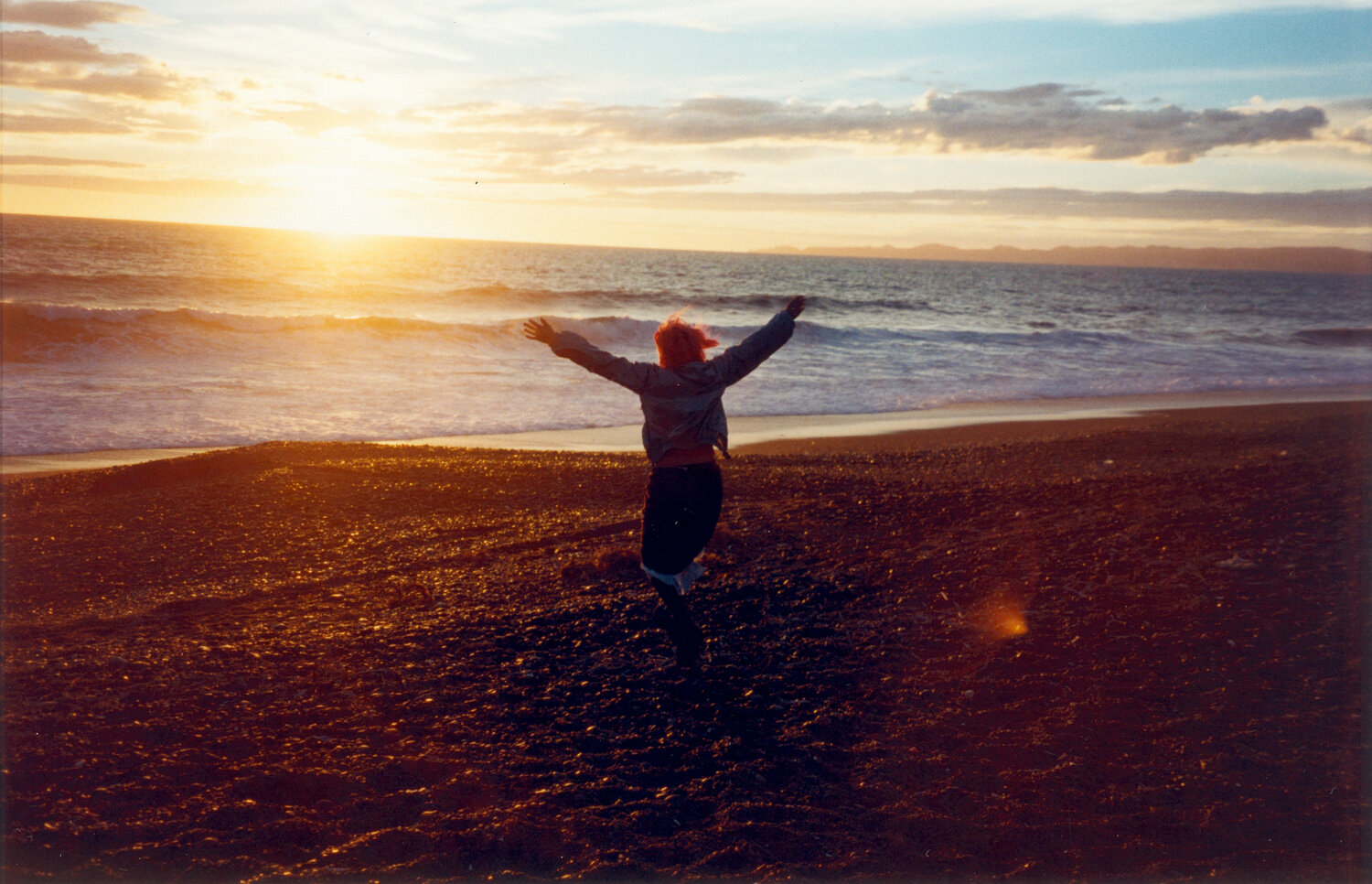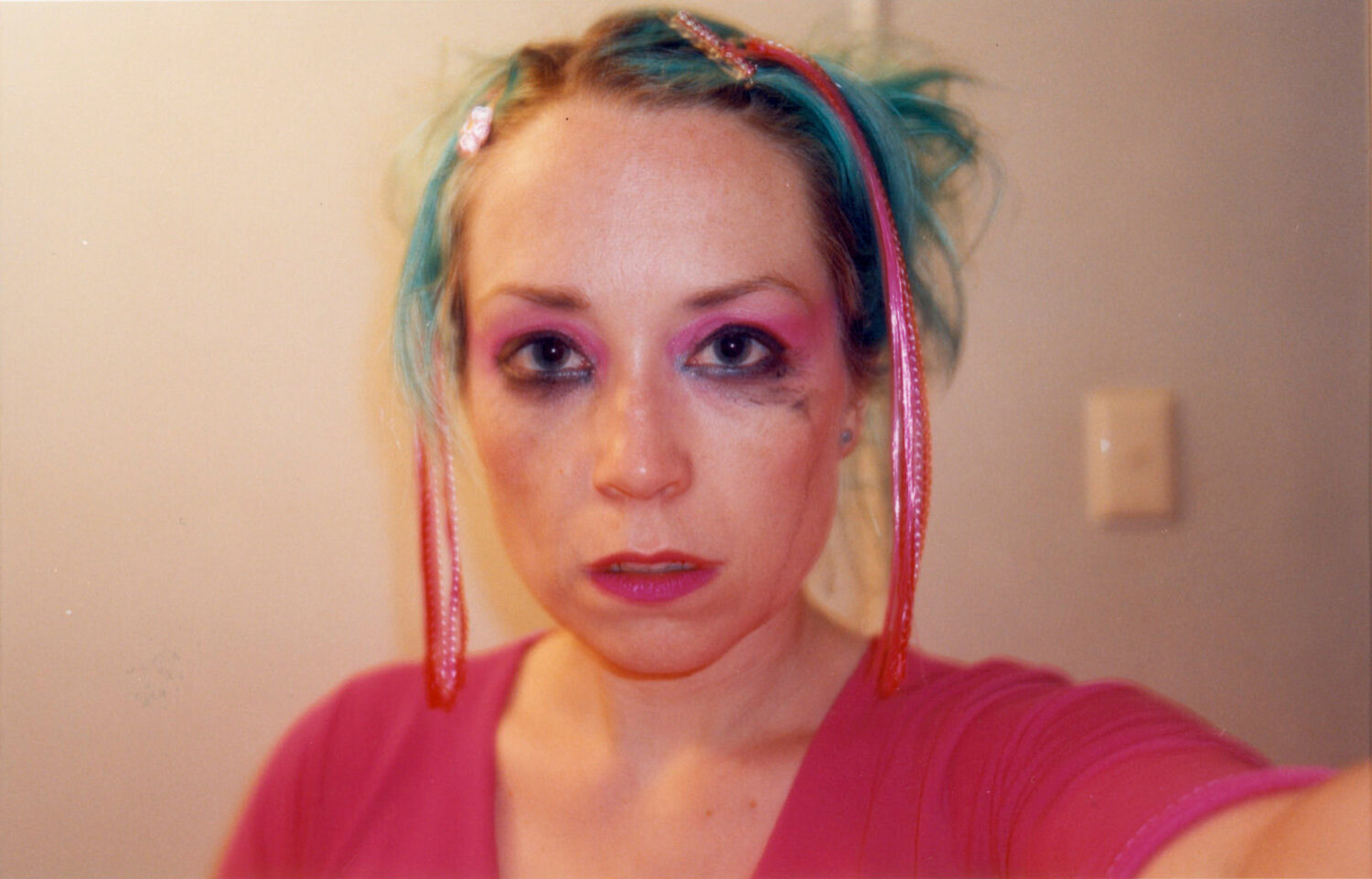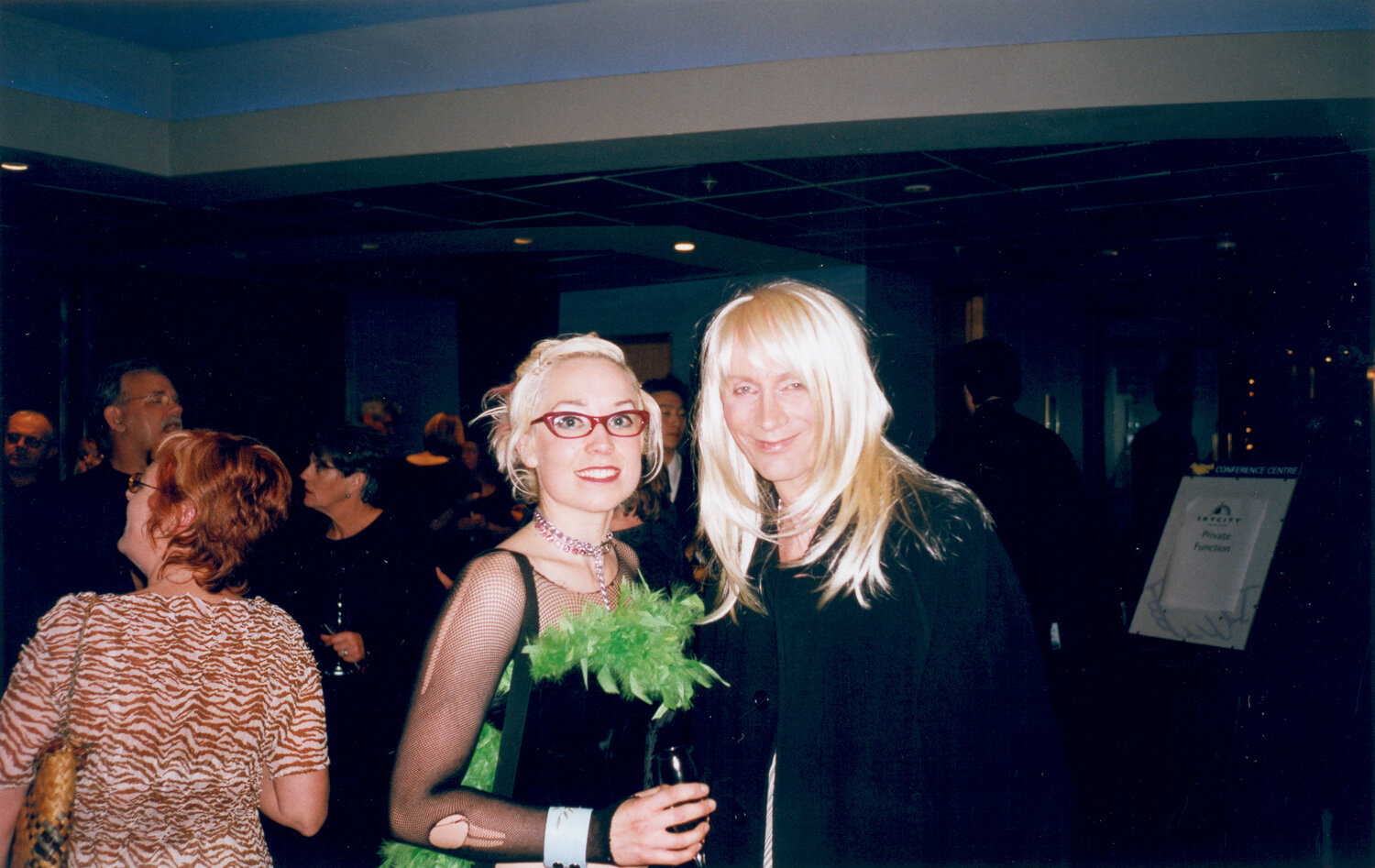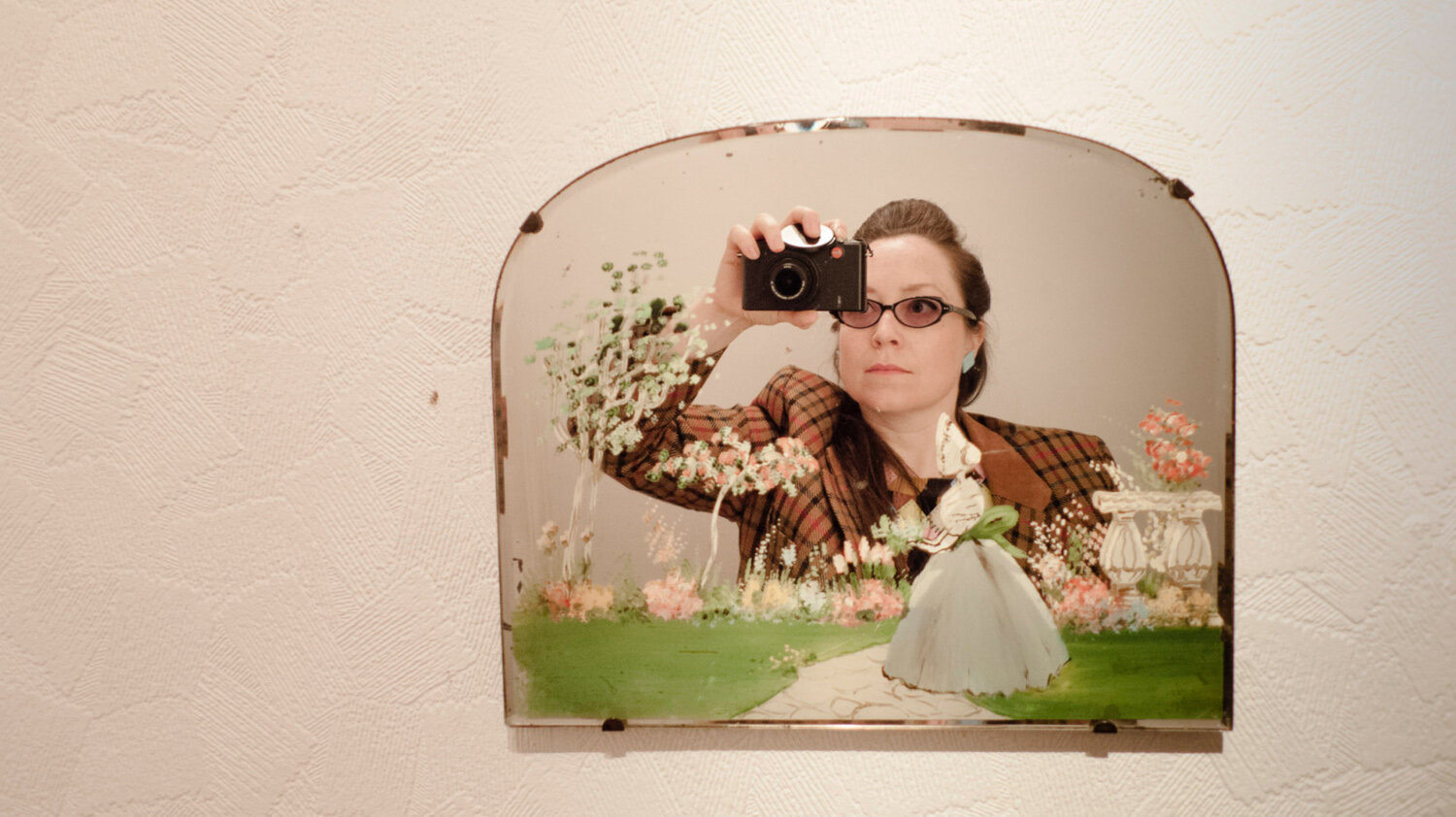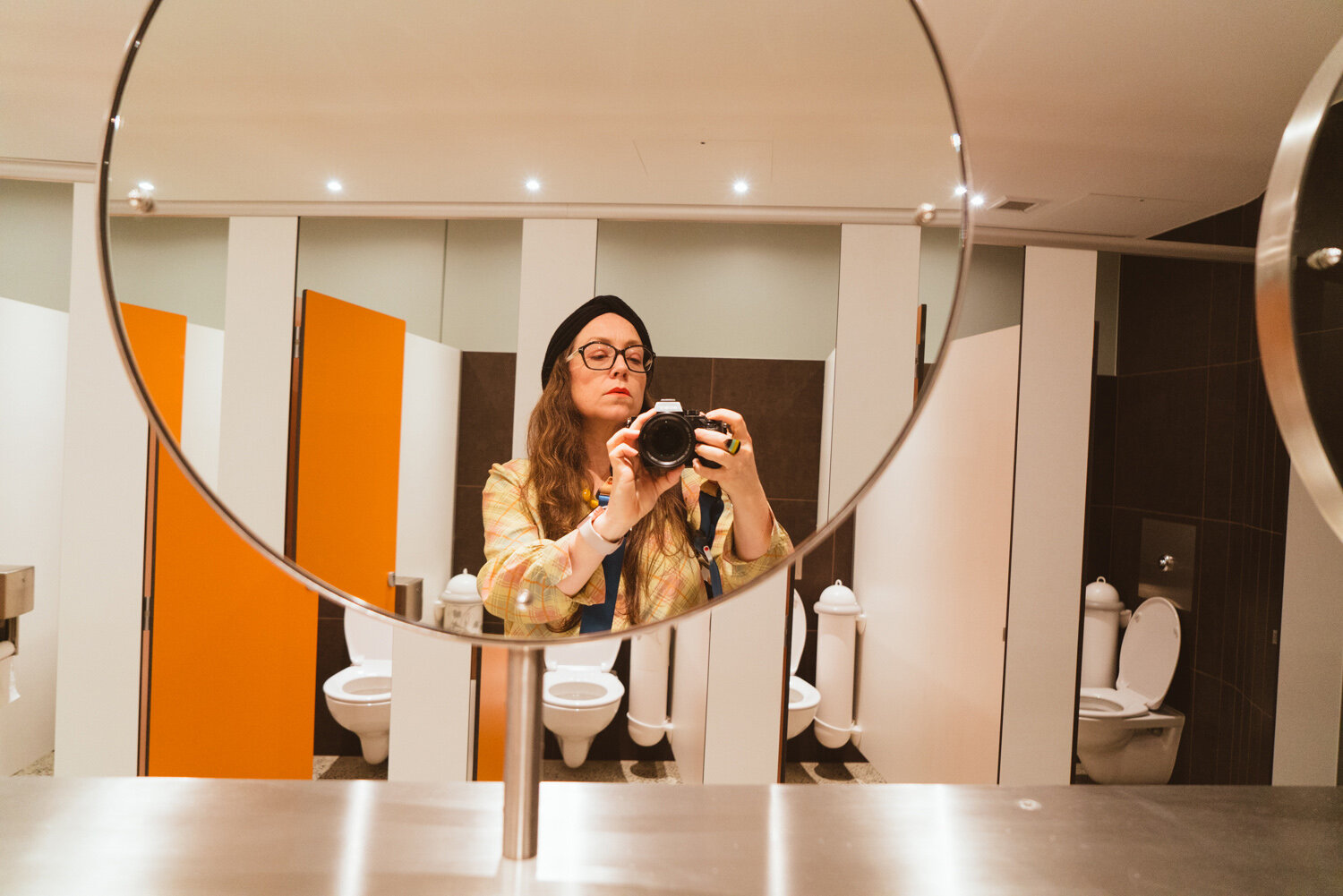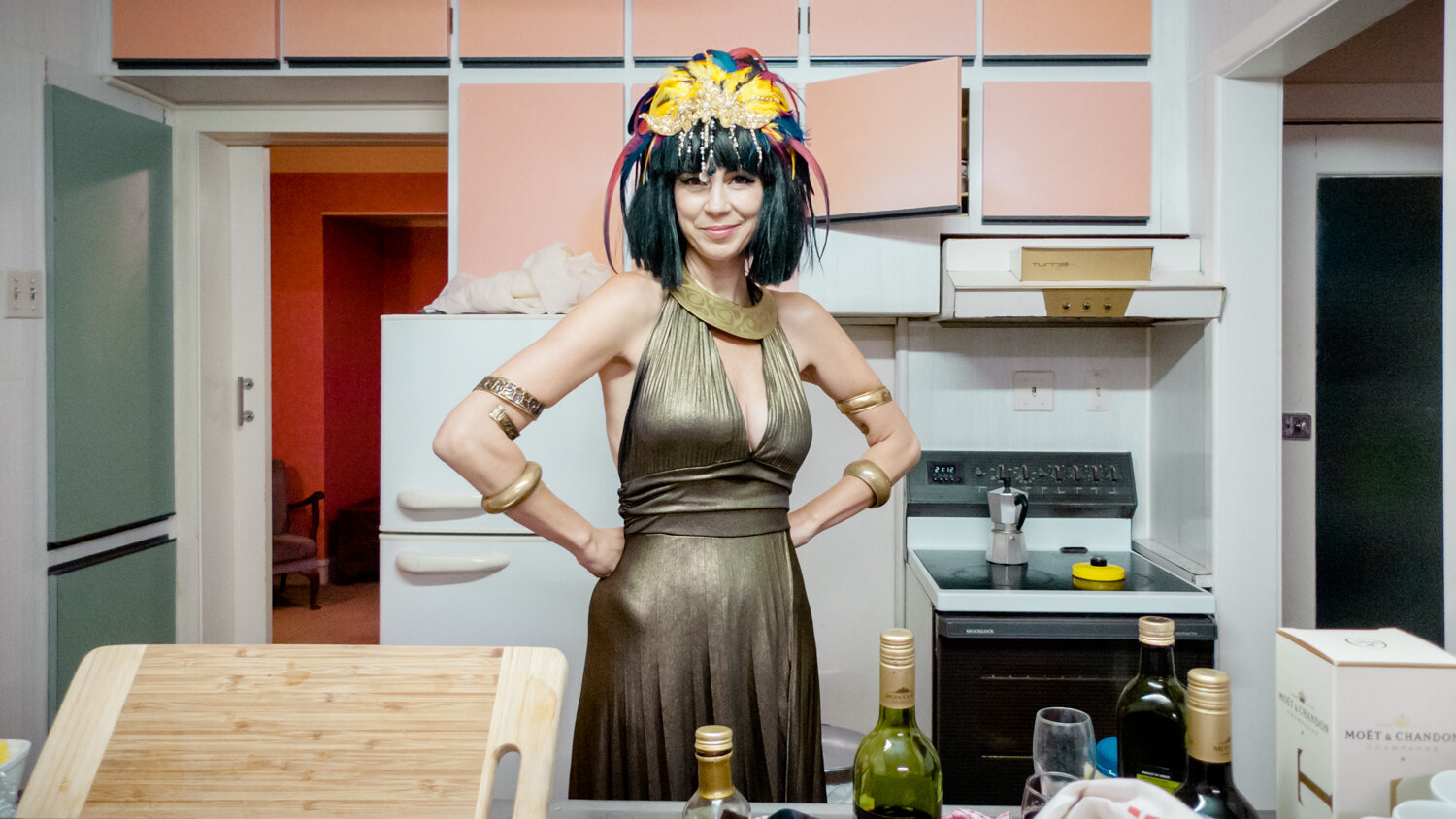Kezia Barnett - featured portfolio
The Kezia Library and Arcade
Featured Portfolio by Kezia Barnett
Essay by Andrew Paul Wood for PhotoForum, 13 July 2020
But I never looked like that!’ - How do you know? What is the ‘you’ you might or might not look like? Where do you find it - by which morphological or expressive calibration? Where is your authentic body? You are the only one who can never see yourself except as an image; you never see your eyes unless they are dulled by the gaze they rest upon the mirror or the lens (I am interested in seeing my eyes only when they look at you): even and especially for your own body, you are condemned to the repertoire of its images. – Roland Barthes
Always carry a camera. – Kezia Barnett
For twenty-three years Kezia Barnett has been taking a photo of herself, or been photographed, each day (The Daily Photo project) and has simultaneously been taking photographs of her surrounds (The Kezia Arcade project) – recording her continuing existence. These are only two threads of Devonport-raised Barnett’s practice, but they are fascinating ones, grouped together as The Kezia Library. The Kezia Library a collection of frozen memories recalling both the projects of Fluxus artists like On Kawara and maybe just a little bit of Leon the Nexus 9 replicant from the movie Blade Runner (1982) who obsessively takes and keeps photographs because he has no memories of his own (ironically Barnett submitted this body of work to Photoforum NZ in 2019, the year in which Blade Runner was set).
“The Kezia Arcade,” says Barnett, “is a parallel collection of photographs, taken as I always carry a camera. The Kezia Arcade is made up of many smaller series of photographs, with the theme a flaneur’s dream, documenting life evolving in front of my lens. I mostly find the photographs where I happen to be, rather than setting out on a ‘shoot’. The Kezia Arcade is my eye onto the world, photographs discovered as I go about life, bringing a director’s eye to these captured fragments. These photos have an aesthetic curiosity, a consciously selected and framed slice of reality that looks outward at the world around, from my photographic point of view, while the Daily Photos look back at myself within the world. I am currently excavating the archive and discovering this second collection that has organically grown over the last 20 or so years, named it The Kezia Arcade. Both collections sit within the overall photo collection: The Kezia Library. A cubic meter of photographs on film and terabytes of data to be mined.”
Barnett began taking these photographs in 1997 during her last year at Elam School of Fine Arts at Auckland University – a long time before the ubiquity of mobile phones with cameras, or digital cameras in general, and social media platforms like Instagram. They record evolving fashion and technology, Barnett growing up in Auckland’s creative scene, friends that she went to Elam with in the ‘90s, and colleagues in the film, art, photography, dance and music worlds – Barnett works mainly as a director of international commercials, short films and music videos.
“At my twenty-first,” says Barnett, “my younger cousin looked at my photo board and said ‘that looks like you, and that looks like you, but they don’t look the same’- pointing at various photographs of me with different hair colours. Simultaneously I was interested in the idea of “Every man and every woman is a star” (Aleister Crowley) and Walter Benjamin’s ‘The Work of Art in the Age of Mechanical Reproduction’ – I exist because the image (a copy of the moment frozen in time) exists. The combination of thoughts led me to start taking a daily photo of myself every day, at the time in 1997 on 35mm. As part of my final year of art school, I exhibited nine months as ‘Calendar Girl’ in the back half of The George Fraser Gallery. The project turned one, then three, then ten years old - at which point I realised that the photo taking was now a habit, a compulsion I would continue, probably, for my lifetime. Over time the project has developed from the idea of inhabiting images and ‘every day is a dress-up day’ to documenting a life.”
Some of the images have a gritty, candid subcultural documentary vibe to them like the early photographs of Murray Cammick, Nan Goldin and Ann Shelton, or even earlier, Fiona Clark. In others Barnett takes on almost Cindy Sherman-esque personae. An image of Barnett superimposed, appearing as two figures, in a swimming pool deconstructs the body through ripples and distortions in a manner similar to Jane Zusters’ Pink Nude in Blue Pool (1980) and another of Barnett on a gurney in a hospital emergency room carries with it a vague echo of Petar Hujar’s Candy Darling on her Deathbed (1974).
“The process”, Barnett says, “is the ongoing theme: a daily photograph that I am in (what I’m doing, where I am and who I am with). The daily photos can be self-timer, taken as a handheld out-stretched-arm self-portrait, taken by a stranger or friend - the constant is that I appear in all of them (even if small in a crowd). Perhaps I could apply for The Guinness Book of Records for longest running daily portrait project? The Daily Photo project has become endurance art.”
The hospital pictures are a record of Barnett’s near brush with death at age twenty-seven with acute appendicitis. This event signals a pivot in the general tone of the artist’s portraits and work away from bubblegum pop to something darker, grungier.
“The experience of nearly dying,” says Barnett, “feeling as if every cell was lifting off my body and floating above me, clarified and changed things. Having delirious hallucinations, my idea of the world expanded, became more layered, more poignant. The process of taking daily photos reminded me I existed.”
There are also strong influences of filmmakers and photographers Jonas Mekas, Agnes Varda, and Vivian Maier throughout Barnett’s oeuvre, but what brings all these selfies-before-selfies into a single unified synthesis is their hyper degree of self-consciousness and presence in the moment. Perhaps that is the filmmaker’s sensibility peeking through, for there is indeed a strongly cinematic feeling to many of these photographs, a capturing of the epic moment in the mundane and quotidian.
These are not professional actors or models, but rather Barnett and the people in her life, which nonetheless seems strangely theatrical and deliberate in a series of homages to Walter Benjamin’s “Arcades Project” as a series of images rather than an architecture, or Guy Debord’s “Society of the Spectacle”. The sheer scale of the project is one of the most remarkable things about it, a slice carved through over two decades measured out in photographs that are at once disposably low-stakes, but raw and authentic, and yet timeless, considered evocations of an evolving Zeitgeist and the self fleetingly becoming aware of itself in an ephemeral moment of anxious Dasein.
These images are the awareness of being seen but flipped over as the viewer is the viewed. Every image records a different quantum state of Barnett, her Schrödinger wave function collapsed into a spin state by her own gaze. Has she ever missed a day?
“One of the very few days,” says Barnett, “I have missed was because of appendicitis, but thankfully my mother took over taking daily photos of me while I was in hospital. I’ve had times I’ve forgotten, and then suddenly woken myself up to take a quick middle-of-the-night sleepy portrait, so engrained is the habit. Sometimes the most interesting days have a boring ‘in-the-hotel-forgot-to-take-a-photo-on-set’ daily photo just so I don’t miss a day. Mostly there is a desire to capture the essence of the emotion, place and day in a visually captivating snapshot of the moment.”
Originally from Devonport, New Zealand, Kezia Barnett has primarily worked as a Director of international commercials, short films and music videos. She holds a BFA from Elam School of Fine Arts, Auckland University, and has filmed and lived in different countries and continued the Daily Photo project every day. Awards include: Golds at the Asia Pacific Advertising Festival, D&AD, The One Show, AWARD and she was a Cannes Lions Finalist. Her shorts and music videos have also had their fair share of accolades. Her most recent short, Nurse Me, screened in festivals around the world: including Aesthetica Short Film Festival in the UK, HollyShorts Film Festival in Hollywood and the New Zealand International Film Festival.
Andrew Paul Wood is a Christchurch-based independent cultural historian, art writer and critic. He writes for a number of publications including Art News New Zealand and Art Monthly Australasia. He was co-translator (with Friedrich Voit) of two collections of the poetry of Karl Wolfskehl, and is art and essays editor at takahē magazine.
Essay supported by funding from Creative New Zealand.





